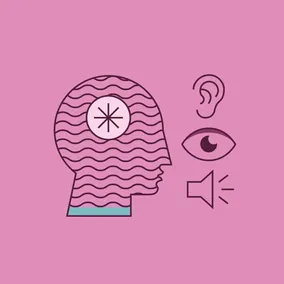Why Accessibility Overlays Fall Short

Although accessibility overlays solve some problems, they create plenty too. Why are there so many drawbacks? Hint: most overlay tools simply cannot fix poorly written code and design errors.
Accessibility overlays are scripts that can be added to a website to allow a user to change parts and pieces of that site such as text color, letter spacing, and color contrast. There are a lot of accessibility overlay companies out there and each offers its own set of options. Pricing for these overlay tools can range from $50 to $1,000 a month.
Ensuring your site meets accessibility standards is imperative for user experience and required by law. Accessibility overlays attempt to provide quick-and-easy solutions, but more often than not they fall short.
How do they work? #
Most overlays are built with JavaScript, which dynamically changes the site. Based on the overlay tools that I tested, they add a data tag to the HTML. That data tag value corresponds to a Cascading Style Sheet (CSS) which changes the style of the site. The accessibility overlay is usually a small button on the corner of the web page. When you click on this button, it pulls up a menu of the available options to change the website.
How do they fall short?
Although accessibility overlays do offer some impressive solutions and furnish users with a range of options to access the content on a website, it is crucial to acknowledge the existence of numerous drawbacks associated with their implementation. These ultimately make overlays unsuitable for effectively achieving Americans with Disabilities Act (ADA) and Web Content Accessibility Guidelines (WCAG) standards for sites.
Overlays do not reduce the risk of a lawsuit
Since 2013, the lawsuits filed under ADA have grown exponentially. When companies realized they can be sued for not having an accessible site, overlay tools came as a low-budget, quick-fix alternative to having the site updated to conform to WCAG AA standards.
A common misconception is that overlay tools will reduce the likelihood of—if not prevent—a lawsuit. This simply is not true. A recent example is the case Murphy v. Eyebobs where the plaintiff, a blind man, sued Eyebobs, an online retailer, claiming the site was not accessible while using his screen reader software. Eyebobs was using an implementation of an "accessibility overlay" solution that was ineffective and potentially exacerbated the accessibility issue. The court settled the case and presented Eyebobs with a mandated action to address the reported accessibility issues on its website. Sites that have an overlay tool are still at risk of being sued if they don’t meet ADA and WCAG standards.
Users don’t activate the overlay
Users with a disability may already have assistive technologies set up and be familiar with how to use them. These assistive technologies are uniform across the entire operating system, making them a preferable choice over accessibility overlays.
An article published in 2022 by the New York Times quoted Patrick Perdue as saying,
“I spend more time working around these overlays than I actually do navigating the website.”
Accessibility overlays can make it even harder for users to navigate the site, which will prevent a lot of users from ever activating the overlay.
Overlays create a 'separate but unequal' experience
Individuals with disabilities have often found themselves marginalized both in tangible and symbolic ways. Businesses frequently have staircases leading to the front entrance making them inaccessible for wheelchair users. As a result, these places may display signs directing wheelchair users to a separate back door.
Overlay companies say that their tool provides a “separate but equal” experience for users with disabilities, but this violates the Separate Benefit (Ibid. (1)(A)(iii) statute. That statute, in short, states that individuals should have the same and equal access to a good, service, facility, privilege, advantage, or accommodation provided to any other individual; and if it is different, it is as effective as that provided to others.
It’s unequal to provide a site that is broken for some users and relies on an overlay to provide a separate “fix” site. Lainey Feingold says in her article Honor the ADA: Avoid Web Accessibility Quick-Fix Overlays that courts will mostly lean in favor of a site that works for everyone versus a separate and unequal website.
This practice of excluding individuals from the original experience is not equal. Similarly, people with disabilities would rather engage with the version of a website with no overlay. This is driven by the concern that, since the tool changes the web page, they might miss out on something important.
Limitations
There's an expression, “garbage in, garbage out”. This is true for website code.
Most accessibility overlay tools simply cannot fix poorly written code or design errors that break WCAG AA compliance requirements such as:
I could list many more, but all of these requirements have to be changed in the code or accounted for when the site was being designed. It is the same thing as trying to fix a poorly-built wheelchair ramp, you can paint it a different color, make the sidebars larger, or add a sign. But you still end up with a wheelchair ramp that is unusable (see the photo below). Overlay tools do the same thing to a poorly built site.

Adding an accessibility overlay is probably not the best idea. Accessibility overlays don’t fix all WCAG issues. Many users will not activate the overlay and, in some cases, the overlay hinders users. It sets a stigma that users with disabilities see the site differently than other users, and settings are localized to just one website.
Start with accessibility
At Viget, we strive for “accessibility first” as part of our research, design, and development processes. In order to ensure this, accessibility best practices are socialized to all employees regardless of specialization. It is part of our values of being good and respectful of our fellow humans. Whether you want to build a product MVP or a marketing website, we think through all the possibilities to make sure the site is accessible. When a website is designed and built with an “accessibility first” mindset, there is no need for accessibility overlays because the site is inclusive for all users.
